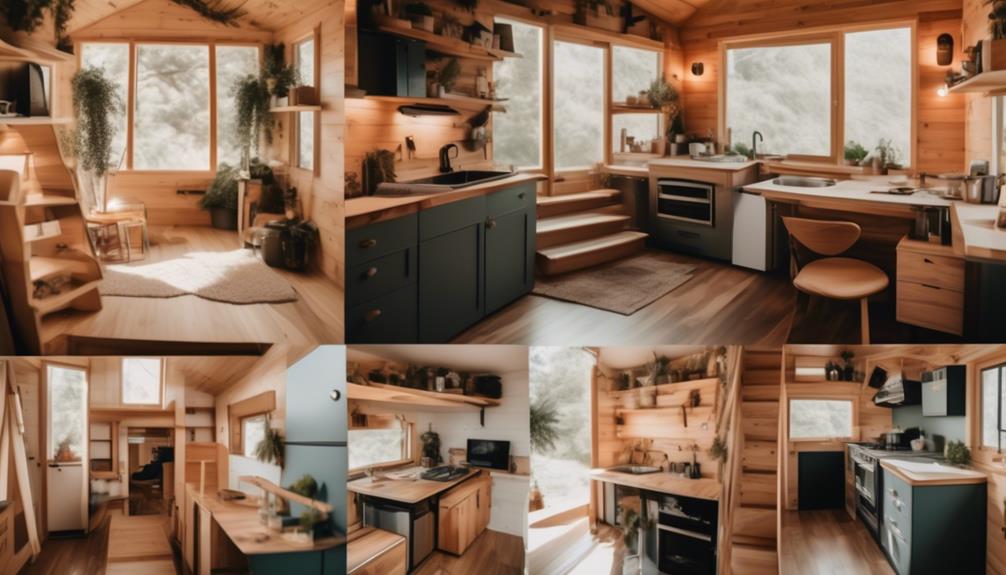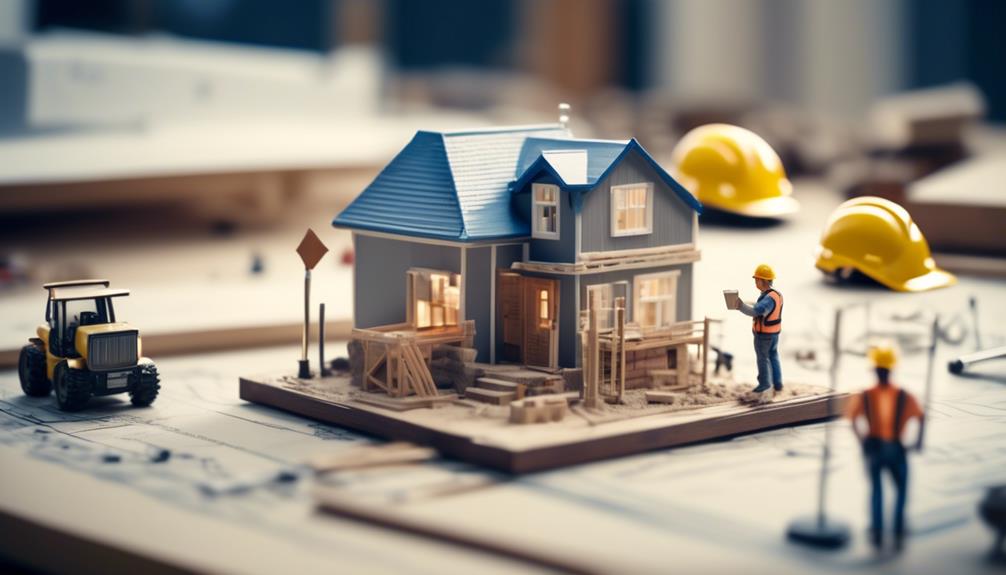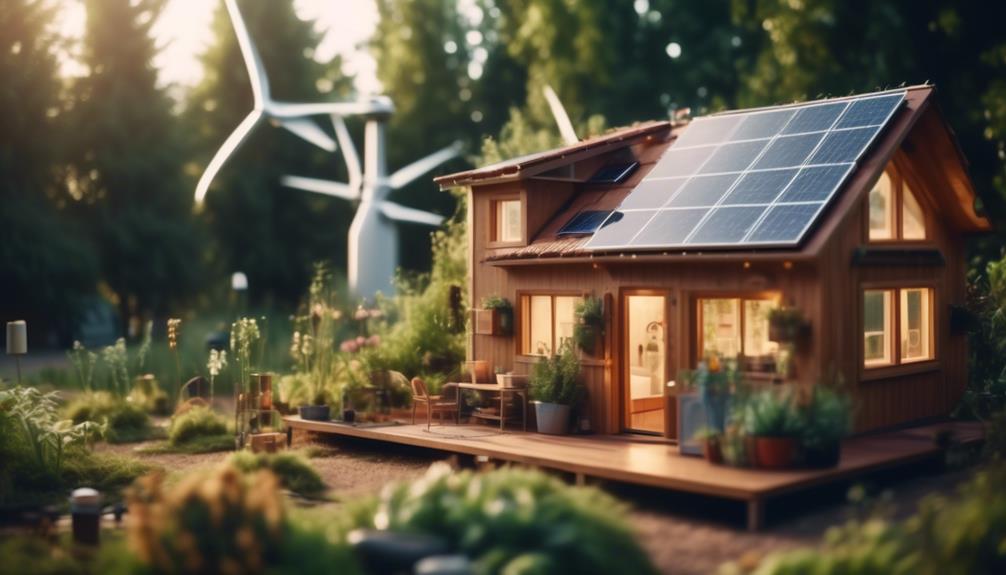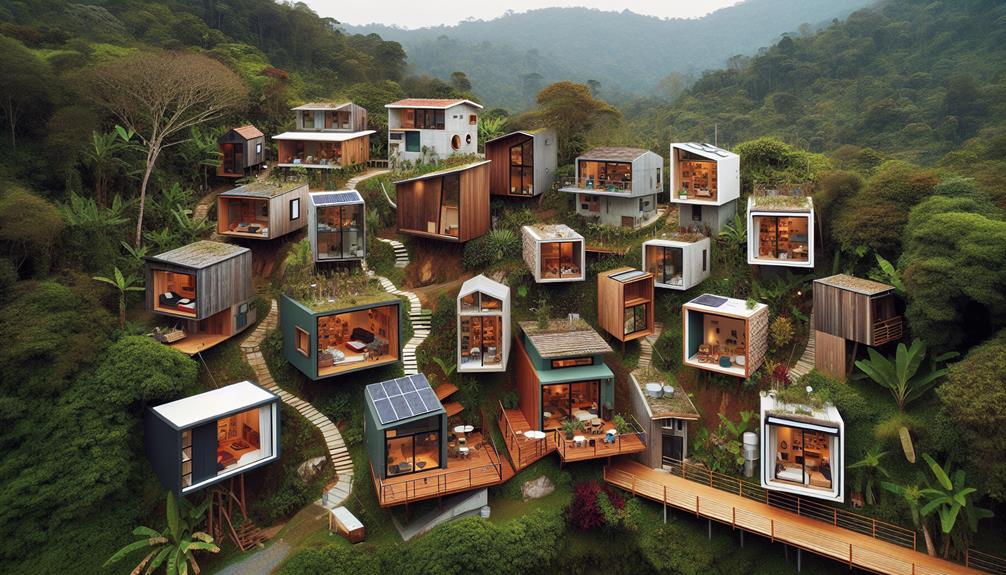Tiny homes tempt with their simplicity and sustainability, but before you transition to this trendy lifestyle, you must mull over multiple matters.
You're not just selecting a snug shelter; you're embracing a whole new way of living that demands careful consideration of your long-term needs. Think about the practicalities: the legal landscape of where you're planning to plant your pint-sized palace, the logistical limits of your lot, and the lifestyle you envision leading.
As you ponder the permanence of your tiny home, you need to weigh the balance between comfort and cost, between customization and constraints. Will you opt for a mobile model or a more stationary setup? How will your choice impact your future?
Stay with us as we explore how to navigate these nuances, ensuring you make a decision that doesn't just fit your budget, but also your dreams for a downsized life.
Key Takeaways
- Assess daily routines and activities to determine the necessary space and functionality in a tiny home.
- Consider embracing a minimalist lifestyle to make the most of the limited space available.
- Plan for specific areas dedicated to hobbies or personal interests to maintain a balanced lifestyle.
- Take into account potential changes in family size or financial situation when designing the tiny home to ensure it can adapt to future needs.
Assessing Your Lifestyle Needs
Before diving into the blueprint of your future tiny home, it's crucial to carefully consider how your current lifestyle and daily routines will translate into a significantly smaller space. You'll need to pinpoint the essentials that support your day-to-day activities and ensure they've a place in your tiny house.
Embrace a minimalist lifestyle that maximizes living space without sacrificing functionality. Account for hobbies that demand specific areas and integrate innovative solutions to house them.
Look ahead to any shifts in your family size or financial situation that could impact your tiny home living. Guarantee that the design of your downsized living space offers personal retreats, maintaining privacy and comfort for everyone.
Understanding Zoning and Legalities
While exploring the dream of tiny home living, it's essential to navigate the often-complex maze of zoning laws and ensure your abode complies with local regulations. As you delve into building a tiny house, understanding zoning intricacies becomes paramount. Counties are adapting to the tiny house movement, but their building codes can be a labyrinth of legalities. It's important to consider these regulations early in the planning stage to prevent costly mistakes.
Before investing, verify that the dealer provides proof of compliance with local zoning. This due diligence can save you a headache later. For a seamless experience, consider consulting an attorney knowledgeable in tiny home legalities. They can help you decipher the codes, ensuring that your tiny sanctuary isn't just innovative, but also entirely legal.
Evaluating Design and Features

When you're ready to turn your tiny home vision into reality, paying close attention to the builder's credentials and the design's safety and functionality is crucial. Your tiny house should not only reflect your style but also provide adequate living spaces within its compact square feet. Delve into Home Interior Design Ideas that maximize every inch.
| Feature | Importance | Emotion |
|---|---|---|
| Safety Standards | Non-negotiable | Peace of Mind |
| Space Optimization | Critical | Empowerment |
| Warranty | Must-have | Security |
Buying a Tiny Home is an adventure in innovation. The Perfect Tiny space is out there, waiting to be tailored to your unique Tiny home living aspirations. Focus on design elements that blend creativity with practicality, ensuring your tiny houses aren't just trendsetters but also homes that resonate with your spirit.
Budgeting and Financing Options
Exploring your budget and financing options is a crucial step in securing your dream tiny home, as you navigate the unique challenges and opportunities in the tiny house market. It's important to choose the right path to ensure you're saving money while still achieving your vision.
Tiny homes can be less expensive, but careful planning is necessary to reap the benefits, including potentially lower living costs.
- Budget Considerations:
- Assess your current finances to decide to purchase outright or finance.
- Building your tiny home could require a mix of savings and loans.
- Financing Options:
- Seek dealers offering tailored financing assistance.
- Explore conventional lenders, but verify if a permanent foundation affects eligibility.
- Research local property financing trends for tiny homes.
Make an informed decision by investigating all avenues to fund your tiny lifestyle.
Selecting a Reputable Builder

When you're on the hunt for a trustworthy tiny home builder, it's crucial to scrutinize their past work and the variety of homes they've successfully crafted. Ensure they're not only certified but also offer solid warranties, showcasing their confidence in their construction.
Lastly, you'll want to gauge their efficiency by examining the timelines of their previous projects, ensuring your tiny dream home won't turn into a lengthy endeavor.
Builder Experience and Portfolio
To ensure your tiny house is built to last, it's crucial to select a builder whose experience and portfolio reflect a strong adherence to quality and compliance with relevant regulations. As you embark on building your tiny house, consider these key points:
- Choosing the Right Home Builders
- Verify certifications, licenses, and adherence to local building codes
- Look for UNITED TINY HOMES or similar tiny home experts with a solid track record
- Custom Consultation to Portfolio Examination
- Request a custom consultation to discuss your unique needs
- Review the builder's portfolio to gauge their expertise from start to finish
Certifications and Warranties
Continuing your journey to a well-crafted tiny home, it's essential to assess the certifications and warranties offered by potential builders to ensure they meet the highest standards of professionalism and protection.
When buying a tiny house, delve into an Insider's Guide to Buying, which emphasizes the importance of a builder's credentials. Check with your local regulations to verify their adherence to building codes.
A Custom Consultation should include discussing certifications that signify a mastery of tiny home interior design and construction prowess.
Look for warranties that cover your home in good condition, with clear terms on repairs or replacements. These assurances require special attention to guarantee you're protected.
Always ensure that you make informed decisions, safeguarding your investment with due diligence, as outlined in any Privacy Policy.
Past Project Timelines
As you engage with potential builders for your tiny home, it's crucial to discuss their past project timelines to gauge their reliability and efficiency in bringing your vision to life.
- Inquire about the construction process:
- How long it will take to build each square foot?
- Can they deliver a tiny house within your timeframe?
- Assess their project management:
- Do they provide regular updates on materials and labor?
- How do they handle unexpected changes?
Make sure the builder you select has a solid track record of creating a new tiny living space with a design that meets your innovative aspirations. It's important that they not only understand the unique challenges of building small but also demonstrate the ability to execute projects efficiently and effectively.
Planning for Long-Term Sustainability

When you're choosing your tiny home, it's crucial to think ahead about how your decision impacts the planet's future. Opt for builders who incorporate eco-friendly materials and energy efficiency strategies, as these choices significantly reduce your ecological footprint.
Eco-Friendly Building Materials
To ensure your tiny home stands the test of time, it's crucial to choose builders who specialize in eco-friendly materials and sustainable construction practices. When you build your tiny house with an eye toward sustainability, you're investing in both the environment and your future.
- Eco-friendly Building Materials:
- Renewable energy sources like solar panels
- Recycled or upcycled materials for insulation and finishes
- Sustainable Building Practices:
- Builders with modern tools in large shops for precision
- Prioritization of customer satisfaction and maintenance
Energy Efficiency Strategies
Harnessing energy-efficient strategies in your tiny home design isn't just smart—it's a long-term investment in sustainability and cost savings. Joining the tiny house movement means embracing innovation that helps not just you, but the environment too. Let our experts help you find just the right options for your new, eco-conscious lifestyle.
Right from renewable energy sources to insulation choices, every detail matters. Here's a breakdown to guide you:
| Strategy | Benefit |
|---|---|
| Renewable Energy (e.g., Solar) | Reduces reliance on non-renewable resources |
| Energy-Efficient Appliances | Lowers energy consumption |
| Proper Insulation | Cuts heating/cooling costs |
| LED Lighting | Decreases electricity usage |
Allow us to help you find the right home that embodies efficiency and ingenuity. With these strategies, your 127 square feet of innovation isn't just a space—it's a testament to sustainable living.
Frequently Asked Questions
What Are the 3 Negative Features of a Tiny House?
You'll grapple with minimal storage, privacy concerns, and zoning challenges that can dampen the allure of tiny house living, despite its innovative approach to downsizing and a minimalist lifestyle.
How Do I Choose a Tiny House?
Navigating tiny house selection, you'll sail the seas of mobile living, balancing minimalist design with innovative storage. Strategize your budget, opt for eco-friendly materials, and ensure your custom build adheres to legal restrictions.
What I Need to Know About Building a Tiny Home?
You'll need to navigate design constraints, understand zoning laws, choose sustainable materials, sort utility connections, explore customization options, plan your budget, obtain building permits, optimize space, consider climate, and decide on mobility for your tiny home.
What Are the Characteristics of a Tiny House?
You'll find tiny houses boast compact design, space efficiency, and minimalist living. They're eco-friendly, with customizable features for a downsized lifestyle. Innovative storage, creative layouts, and mobility options support your energy independence.
Conclusion
As you nestle into your ideal tiny home, remember it's like piecing together a bespoke jigsaw puzzle. Each decision—from zoning laws to the builder's craftsmanship—should fit snugly with your lifestyle.
Budget smartly, dream boldly, and prioritize sustainability to ensure your cozy haven stands the test of time. Choosing wisely means you'll craft not just a house, but a lasting, vibrant sanctuary that mirrors your unique life's rhythm.

